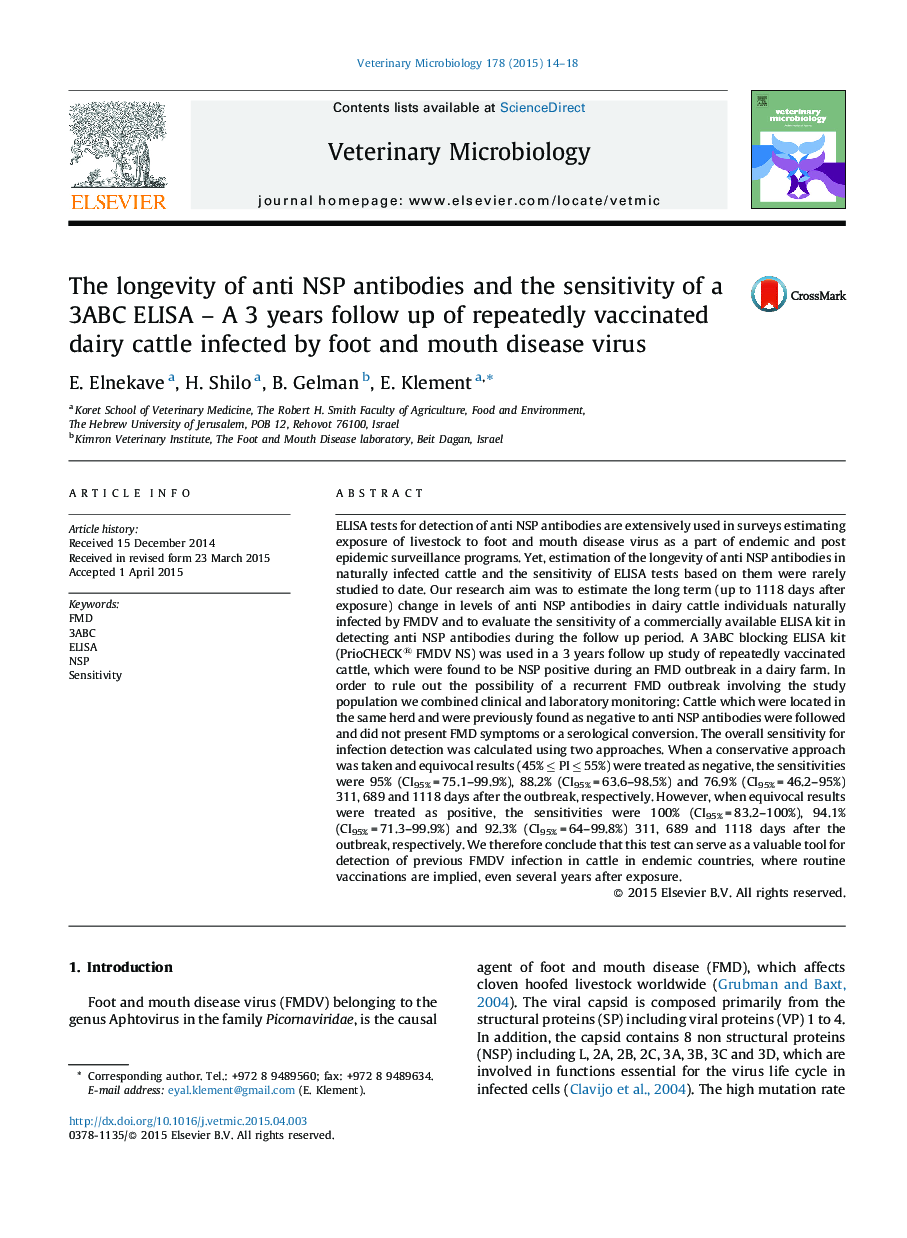| کد مقاله | کد نشریه | سال انتشار | مقاله انگلیسی | نسخه تمام متن |
|---|---|---|---|---|
| 5799877 | 1555349 | 2015 | 5 صفحه PDF | دانلود رایگان |

- Anti NSP antibodies are extensively used in estimating exposure of livestock to FMD.
- Data on sensitivity of ELISA for detection of naturally infected cattle are scarce.
- Levels of antibodies to NSP were followed up to 1118 days in dairy cattle.
- The overall sensitivity was between 76.9% and 92.3% 1118 days after the outbreak.
- Infection by FMDV can be detected in vaccinated cattle, years after exposure.
ELISA tests for detection of anti NSP antibodies are extensively used in surveys estimating exposure of livestock to foot and mouth disease virus as a part of endemic and post epidemic surveillance programs. Yet, estimation of the longevity of anti NSP antibodies in naturally infected cattle and the sensitivity of ELISA tests based on them were rarely studied to date. Our research aim was to estimate the long term (up to 1118 days after exposure) change in levels of anti NSP antibodies in dairy cattle individuals naturally infected by FMDV and to evaluate the sensitivity of a commercially available ELISA kit in detecting anti NSP antibodies during the follow up period. A 3ABC blocking ELISA kit (PrioCHECK® FMDV NS) was used in a 3 years follow up study of repeatedly vaccinated cattle, which were found to be NSP positive during an FMD outbreak in a dairy farm. In order to rule out the possibility of a recurrent FMD outbreak involving the study population we combined clinical and laboratory monitoring: Cattle which were located in the same herd and were previously found as negative to anti NSP antibodies were followed and did not present FMD symptoms or a serological conversion. The overall sensitivity for infection detection was calculated using two approaches. When a conservative approach was taken and equivocal results (45% â¤Â PI â¤Â 55%) were treated as negative, the sensitivities were 95% (CI95% = 75.1-99.9%), 88.2% (CI95% = 63.6-98.5%) and 76.9% (CI95% = 46.2-95%) 311, 689 and 1118 days after the outbreak, respectively. However, when equivocal results were treated as positive, the sensitivities were 100% (CI95% = 83.2-100%), 94.1% (CI95% = 71.3-99.9%) and 92.3% (CI95% = 64-99.8%) 311, 689 and 1118 days after the outbreak, respectively. We therefore conclude that this test can serve as a valuable tool for detection of previous FMDV infection in cattle in endemic countries, where routine vaccinations are implied, even several years after exposure.
Journal: Veterinary Microbiology - Volume 178, Issues 1â2, 9 July 2015, Pages 14-18